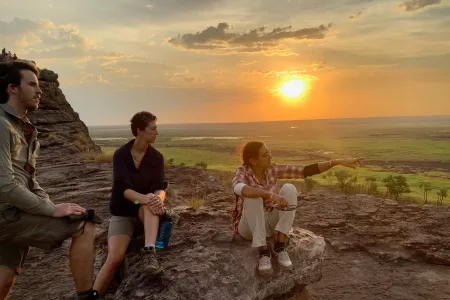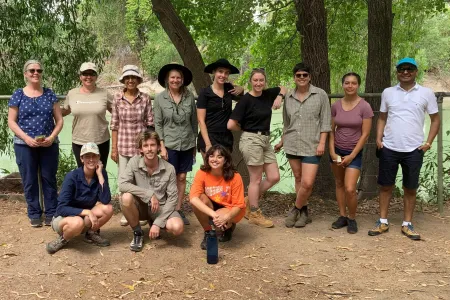Learning about livelihoods, business and culture on country: A CDU intensive course
A small group of lucky Charles Darwin University (CDU) students recently found themselves looking across the majestic Nardab floodplains of the East Alligator River, right on sunset. Perched atop the world-renowned rock formation Ubirr,the students were taking part in an intensive unit focusing on the relationship between Indigenous livelihoods and natural resources. Led by Research Institute for the Environment and Livelihoods (RIEL) Associate Professor Natasha Stacey, the unit involved a 2-day field trip to the world heritage listed Kakadu National Park to learn about a variety of Indigenous enterprises firsthand, as well as one incredible sunset.
The week-long unit began in the classroom, with an introduction to the scope and importance of natural resources to a range of people’s livelihoods, and some different types of Indigenous enterprises. Coupled with a basis in the policy, economic and livelihoods theory that relates to Indigenous economic development, by the end of day one, the students had a firm grounding in the units learning outcomes.
Next, first in the classroom and then in the field, the students were exposed to a number of case studies of Indigenous enterprises that directly related to natural resources. A lecture from CDU alumna Dr. Jennifer Ansell from Arnhem Land Fire Abatement introduced the students to the carbon economy, and how traditional owners and ranger groups can reduce carbon emissions – and make some money – through controlled wildfire management. The students received similar introductions to the Kakadu Plum (from the Northern Land Council) and Crocodile industries (from the NT Government), where Traditional Owners are engaging in different plant and animal-based businesses using the natural resources they have exploited for millennia, on their country.
Once on ground in Kakadu National Park and after an introduction to the park’s management structure and Indigenous issues, the students were treated to an example of cultural tourism, participating in the Guluyambi Cultural Cruise, an Indigenous owned and operated tourism business. Meandering past ancient sandstone escarpments, Aboriginal guide - Neville Namarnyilk gave an insight into his culture, country, the river’s abundant food chain, and traditional uses for many plants and animals. Before heading back to Darwin, the students also visited an Indigenous-run native plant nursey, responsible for providing the vegetation needed to rehabilitate the ERA Ranger Uranium Mine on the outskirts of the main township,Jabiru, and the Marrawudi Gallery, to learn about natural resources used in art and craft industry from local Aboriginal weavers.
The unit concluded back in the classroom, reviewing a few more examples of Indigenous enterprise (Mimal Land Management Pty Ltd; Indigenous aquaculture development by Yagbani Aboriginal Corporation and NT Fisheries, and a communication expert who described tips for marketing enterprises) and some reflection on the week's activities. Regardless of the course learning outcomes, the students got some once in a lifetime experiences in arguably Australia’s best-known National Park.
ENV317/517: Natural Resources and Indigenous Livelihoods runs every year and is an accredited specialist elective for third year and Masters level courses. It is also open to professionals working in natural resource management, contact natasha.stacey@cdu.edu.au for further information and enrolments.
Related Articles
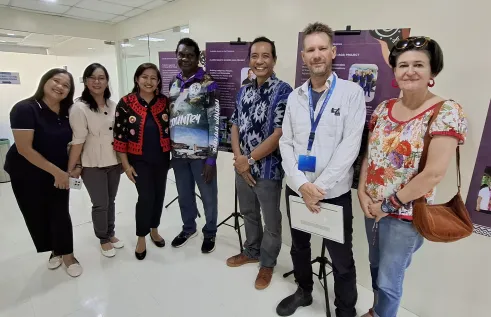
Environmental researchers and rangers visit Philippines as part of NT-Philippines exchange
CDU researchers and representative from Dhimurru Aboriginal Corporation completed a valuable exchange with Philippine leaders and rangers in June 2025.
Read more about Environmental researchers and rangers visit Philippines as part of NT-Philippines exchange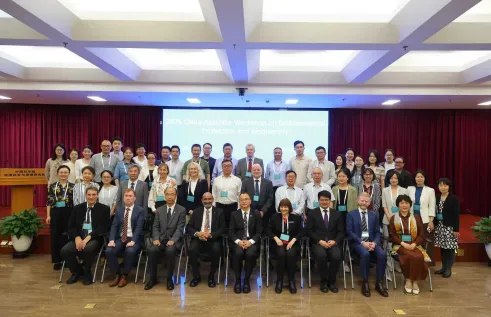
Professorial delegation discusses environmental protection and biodiversity in Beijing
Charles Darwin University (CDU) academics were among a high-level Australian delegation that visited the Chinese Academy of Sciences (CAS) last month.
Read more about Professorial delegation discusses environmental protection and biodiversity in Beijing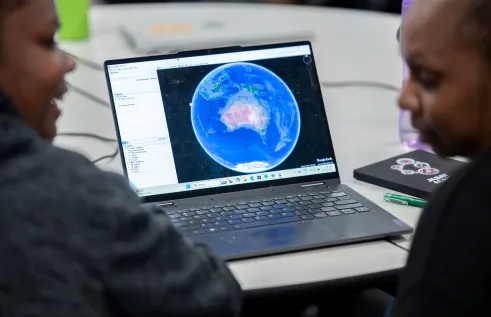
Rangers and PhD candidate unite at mapping workshop
How can technology support the revival of knowledge, its intergenerational transmission, and the defense of ancestral lands, all while ensuring cultural protocols are upheld?
Read more about Rangers and PhD candidate unite at mapping workshop
